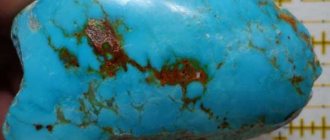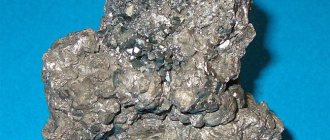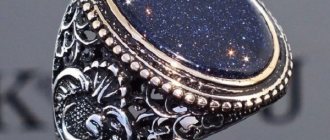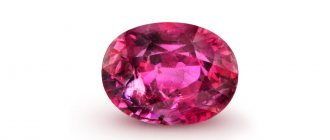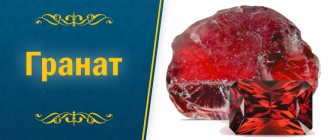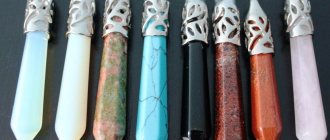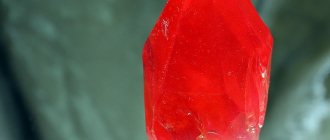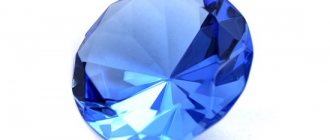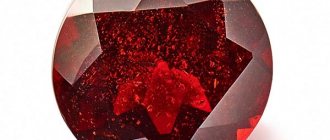| Stone type | Semiprecious |
| Varieties | Almandine, andradite, grossular, pyrope, spessartine, uvarovite |
| Transparency | Transparent |
| Shine | Glass |
| Mohs hardness scale | 7,5 |
| Chemical composition | R3R2[SiO4]3 |
| Color | White, green, red, orange, purple, black |
| Owner's color type | Summer autumn |
| Owner's temperament | Choleric |
| Names | Alexandra, Alla, Anton, Antonina, Valentina, Valeria, Varvara, Vasily, Galina, Daniil, Eva, Irina, Lyudmila, Maya, Maria, Mark, Matvey, Nellie, Nikita, Oksana, Roman, Tamara, Eduard |
| Zodiac sign | Gemini, Libra, Aquarius, Virgo, Capricorn, Leo, Scorpio, Sagittarius |
| Date of Birth | from July 23 to August 22 from October 24 to November 22 from November 23 to December 21 from December 22 to January 20 from January 21 to February 18 |
| Chinese horoscope | Goat, horse, monkey |
| Element | Water, Air, Earth, Fire |
| Planet | Venus, Mars, Jupiter |
| Day of the week | Tuesday |
| Month | January, October |
| Season | Winter autumn |
| Numerology vibration | 6, 8 |
| Chakra | Anahata, Muladhara, Svadhisthana |
| What stones is it compatible with? | Agate, heliotrope, emerald, sapphire |
| What stones is it not compatible with? | Aventurine, aquamarine, beryl, turquoise, diamond, heliodor, pearl, lapis lazuli, moonstone, ruby, peridot, chrysoprase, zircon |
| Therapeutic effect (problems) | Blood pressure, hormonal imbalance, detoxification, slow metabolism, libido, wounds, skin damage, burns |
| Therapeutic effect (on organs) | Organs of the gastrointestinal tract, cardiovascular system, joints |
| Magic properties | Material well-being, self-confidence, strengthening relationships, energy depletion |
There are differences between garnet and ruby, despite the fact that the minerals are visually similar to each other.
Stones have different chemical composition and physical properties, but their value is different. Rubies are often replaced by unscrupulous sellers with natural garnet or artificial fakes. The techniques discussed will help verify the authenticity of copies.
Differences in chemical and physical properties
In ancient times, a person could not distinguish a natural garnet stone from a ruby, since both minerals have a rich red color and pronounced shine. When the properties of gems began to be studied by mineralogists, clear differences were found.
Be sure to watch: How and where diamonds are mined
Physicochemical properties are given in the table:
| Mineral | Chemical formula | Class | Hardness | Density | Shine | Transparency | Other properties |
| Ruby | Aluminum oxide with chromium | Corundums, oxide class | 9 | 4 g/cm3 | Pronounced, glassy | Various degrees | Trigonal system, conchoidal fracture, |
| Garnet (amaldines and pyropes) | Silicate of aluminum, iron, and other elements that determine the color of the mineral | Silicate class | 7 | 4.2/cm3 | Subdued glass or wax | Various degrees | The color is determined by impurities of other chemical elements; the crystals have the shape of rhombic dodecahedrons. |
Ruby is a precious stone, and garnet in all its varieties is semi-precious.
https://www.instagram.com/p/BpHJx6EnESm/
What is more expensive - ruby or sapphire?
Rubies and sapphires belong to the huge corundum family and have the same chemical formula and crystal structure. The only difference between them is the color that the crystals are given by the addition of microelements - chromium, vanadium, titanium or iron.
The cost of stones depends on the purity of the water, i.e. transparency, presence or absence of inclusions - black dots, bubbles, cracks, etc., color intensity and a number of other characteristics. Among rubies, the most valuable stones are the color of pigeon's blood, i.e. purple-red. The most expensive sapphires are bright blue, with a white or blue star inside. It is impossible to say which stone is more expensive based only on its name - the cost of each gem weighing from a carat and above is determined individually according to many criteria.
Visual and other means of differentiation
A ruby costs several times more than a garnet. Often a cheaper stone replaces a precious crystal in jewelry. Only a jeweler can accurately determine the type of stone. But if you have instruments such as a dichroscope, a magnet, a magnifying glass, an ultraviolet lamp and high-precision electronic scales, you can try yourself as an expert.
How to test minerals:
- Take a dichroscope (a device for detecting two-colors) and direct a beam of its color onto the crystal. If the shade changes from light to dark, this is a sign of a ruby. Pyropes do not have pleochroism, so they do not change the saturation of the shade under the beam.
- If you illuminate a ruby with an ultraviolet lamp, the inside of the specimen will glow orange. This property is called luminescence. Pyropes do not have it.
- In a real ruby, when viewed through a microscope, inclusions in the form of tubes can be seen. Pomegranate has a homogeneous structure.
- All corundums have a high hardness rating, so they can easily scratch topaz or crystal, rated 8 points. If you try to damage these minerals with a garnet, the attempt will be unsuccessful, since this stone is assigned 7 points.
- The ruby shines and shines like a diamond. Garnet is characterized by a less pronounced shine.
- If you bring pyrope to a magnet, it will be attracted because it contains iron impurities. Ruby is aluminum oxide with chromium, so it is not magnetic. However, a less valuable mineral may be low in iron, which is why the magnetic properties will not be clearly visible. In this case, the specimen should be placed on a high-precision scale and a magnet should be held up. If the mass changes, then this is a sign of pomegranate.
Important! If there is no special equipment at home, the gem of interest should be taken to a gemologist for examination.
Red spinel
Spinels are beautiful gemstones that come in a variety of colors. The most valuable of them are red. Previously, they were not even distinguished from rubies due to their similar appearance and similar physical properties. Red spinels used to be associated with wealth and power. They adorned the imperial crowns of Russia, Great Britain, France, Germany and the thrones of eastern rulers. This stone is used to decorate the “Monomakh’s Cap”, which was used to crown the Russian princes. The Diamond Fund houses Russia's first imperial crown, made in 1762 for Catherine II. It is decorated with a unique spinel sample of 398.72 carats. Red spinels have been rapidly gaining popularity in recent years.
This is the fastest growing semi-precious stone in price. The most highly valued stones are bright red in color from Burma and Tanzania. Large gem-quality crystals are rare and therefore especially valuable.
It is also worth noting that, unlike most precious stones, spinels are practically not subjected to refining (improving the appearance of the stone using various methods). The high hardness of the stone allows it to be used in any type of jewelry and worn every day. The price of high quality red spinel weighing about 5 carats usually lies in the range of 6000-8000 dollars per carat.
Options for imitation ruby and garnet
Beautiful specimens of real stones are rarely found in nature. Therefore, technologies have been developed to create substitutes from natural and synthetic raw materials.
Be sure to check out: How to clean a diamond at home
Natural
Almandine, pyrope, rubellite, and red spinel are used as cheaper ruby substitutes. Such copies are natural, since they are represented by natural gems. Red spinel has many similarities with scarlet corundum. But if you examine both crystals using a refractometer and a dichroscope. Spinel has a single refraction because it has a cubic system.
PRIVATE LIFE OF RUBY – 2EnergySellers of stones usually write on their websites: if you want the stone to be...
Published by Lala Lotos. Jewelry that works. Sunday, April 6, 2014
Ruby is characterized by double refraction. The precious mineral has fibrous inclusions of rutile, which can be seen under a microscope. Spinel has a strawberry hue, while ruby has a blood red color without pink tones.
Garnet is often replaced with scarlet-colored cubic zirconia. Both stones have different hardness levels, so cubic zirconia can be easily scratched with a knife.
Is it easy to distinguish a garnet from a ruby at home?
Not really
Artificial
Synthetic specimens are made without the use of natural raw materials, and therefore have a low cost. Counterfeits are made from plastic and glass treated with dye.
A counterfeit specimen obtained from synthetic materials can be easily distinguished from any natural crystal. The following techniques will help you do this:
- The artificial gem quickly heats up from the warmth of your hands. Genuine pyropes and rubies always remain cool to the touch, so they cannot be heated.
- If you apply a drop of lemon juice to a test sample of natural origin, the color and intensity of the shine of the stone will not change. If the crystal becomes cloudy, this indicates that it is fake.
- It is easy to identify a plastic insert: you need to heat the tip of the needle on a fire and touch it to the sample. If there is an unpleasant chemical smell, this means that you are dealing with a cheap copy.
- Natural rubies and pyropes are hard gems. They cannot be damaged with a knife or needle. However, synthetic copies will deteriorate from such exposure.
- It is recommended to examine the mineral under a microscope or through a magnifying glass. If the sample has a uniform color, you should doubt its authenticity. Each mineral created by nature has an uneven tone due to the influence of environmental factors.
Published by Natasha Lepekhyna Tuesday, July 11, 2017
Important! To be sure of the origin of the purchased stones or products with them, you need to make purchases in jewelry stores with a good reputation.
Raw crystals are usually offered at specialized auctions. When purchasing minerals, be sure to check the seller’s information about the origin. Natural crystal a priori cannot cost less than the market price. This is especially true for precious rubies.
What is different about pomegranate?
The richest ruby deposits are found in cold Antarctica, but searching for minerals there is quite difficult. Therefore, stones began to be mined in Asia and African countries. Even the ancient Indians hunted for the gem in order to build a powerful amulet from it. They believed that it perfectly protected against the evil eye, illness and even death.
Nowadays, rubies are valued mainly for their aristocratic, conspicuous appearance and are often used in exquisite jewelry.
Pomegranate is visually difficult to distinguish from its more expensive “brother”. It also comes in a vibrant red or pink color. However, in terms of density, garnet is 3 units lower than ruby (6 on the Mohs scale). It is not used in electronics, since it cannot withstand electromagnetic waves and is destroyed. But in the jewelry industry it is in great demand. The famous garnet beads, necklaces, and earrings are perfect for ladies with strong energy and charisma who want to stand out and gain unique charm.
Deposits of garnet deposits in our country are concentrated in the Urals. Do you want to see pomegranate in its original form? Visit the Ural town of Saranovsk. The local garnets look clean and neat even without additional processing. Local residents called it uvarite and are very proud that such a miracle is born in their vicinity.
By the way, pomegranate, like the berry of the same name, occurs in the form of small grains. It practically never occurs alone in nature. To remove one stone from a granular plate, you will have to completely destroy the entire texture. Just like sweet pomegranate fruits, right? Perhaps the name of the mineral was given by its resemblance to everyone’s favorite berry.
Due to the striking similarity to a ruby, many jewelry workshops profit from the ignorance of buyers and pass off an inexpensive garnet as a more valuable ruby. Even experienced mineralogists sometimes cannot find the differences, because it is impossible to do this by eye. You can only rely on your intuition and the cleanliness of the manufacturer.
To read: 5 ways to distinguish rock crystal from a fake and not run into deception
Interesting experiments
It is most likely that similar minerals can be distinguished only with the help of special high-precision equipment. Do you have this? We assume that no, and therefore we will determine how a ruby differs from a garnet using available and available means.
For this you will need:
- UV lamp,
- strong magnifying glass,
- magnet,
- dichroscope,
- scales with high accuracy (electronic kitchen or pocket scales are also suitable).
The main difference between these two stones is the ability or inability to dichroism. What it is? This is a unique property found only in rubies. Air polarized by a dichroscope can change the color of rubies. What it will be like depends on the angle of light falling on it.
A grenade will not respond to such a device, but it will quickly respond to magnetic waves. Crystals of this mineral are easily “charged” from the most ordinary magnet. No, the stone will not be attracted to it, but by touching it or lying next to it, it will “gain” a little weight. Carry out an experiment: place a magnet near a pomegranate for a couple of minutes and weigh it. If the mass has increased, this is definitely not a ruby.
Main conclusions
- Ruby and garnet are stones that are similar to each other. It is important to distinguish them because they have different costs. Garnet is a semi-precious mineral and ruby is a precious mineral.
- Both species have different physical and chemical properties, although they differ in appearance from each other.
- Special equipment will help you examine minerals to evaluate shade, the presence of pleochroism, and magnetization.
- Copies can be natural or synthetic. Natural fakes are cheaper substitutes that visually resemble the original crystal. Synthetic samples are made of glass and plastic.
- Genuine stones can only be purchased in specialized stores or at auctions. The seller must clarify information about the origin of the crystal and objectively evaluate the declared value.
Share your experience using ruby and garnet and leave feedback in the comments.
What is more expensive - a ruby or a diamond?
Diamonds, rubies, sapphires and emeralds have long been considered the most expensive stones. The most valuable, true king of jewelry is the diamond, since in ancient times it was very difficult to mine, and due to its extreme hardness, it was difficult to polish, much less cut.
On the value scale, diamonds are at the top, followed by rubies and sapphires, but according to some estimates, emeralds come in second. The classification of stones is strongly influenced by a number of factors: traditions, fashion trends, the number of stones on the market, purity of water, color saturation, etc. All this applies only to natural stones, because... artificial rubies are valued much cheaper.
